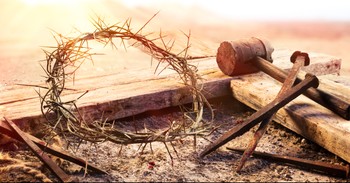
When Jesus asked his disciples, "Who do people say that I am?" he received a multitude of answers. Some said he was John the Baptist, some said he was Elijah or Jeremiah or another one of the prophets. The disciple Peter came up with the correct answer when he said, "You are the Christ, the Son of the living God." The early Christians accepted Peter's confession, but they had many different ideas of exactly what it meant for Jesus to be the Christ. What was Jesus' real nature and person like? How was he related to God and to the Father? To what degree was he truly human? There were many debates over these issues in the fourth through the sixth centuries of the church.
When Constantine became emperor of the Roman Empire and made Christianity a legal religion, he believed unity of the Church was important to the political strength of the empire. So, in 325 he called a Council at Nicea to settle disputes over the nature of Christ. The council issued the Nicene Creed, agreeing that Christ was both man and God and that as the Son of God he had the same divine nature as the Father.
Once it was accepted that Jesus was both fully God and fully man, debates began to rage over how Christ's deity was related to his humanity. One group, the Apollinarians, said the divine Word of Christ took the place of Jesus' human mind and will so that his divine nature was always predominant. Others argued back that if Jesus did not have a human mind and will he could not be fully human. Yet another group argued that at the incarnation the divine and human were so combined in the person of Christ as to produce a new, unique individual. Others again thought that the divine and human natures of Jesus were kept so separate that it was almost like he was two persons. Very often each conflicting group became associated with a particular city - Antioch, Alexandria, Rome, Constantinople, so that political rivalry became entangled in theological debate.
In July, 450, Emperor Theodosius died from a fall off his horse and his brother-in-law Marcian ascended the imperial throne. Spurred by his wife, the Empress Pulcheria, one of Marcian's first acts was to call a church council to deal with some of these religious problems. He hoped for religious unity as a support to the political unity of the empire -- a political unity to face the growing military threat from the east.
On this day, October 8, 451, the largest of all church councils opened at Chalcedon, near Constantinople (modern Istanbul). Five or six hundred bishops were present representing the many conflicting views found within the church. After much debate, on the 22nd of October, a Chalcedonian creed was adopted which re-affirmed the divine and human natures of Christ recognized at Nicea and further stated that the two natures of Christ were "without confusion, without conversion, without severance, and without division." Jesus was affirmed as being both fully divine and human. His two natures were combined in one person without his becoming less divine or less human. The work Christ did was the work of his whole person, not of one nature or another. In that day Pope Leo stated the Chalcedonian position that in Christ the "lowliness of man and the majesty of God perfectly pervade one another...the two natures make only one person."
Some of the Egyptian, Turkish and eastern Christians could not bring themselves to accept the Chalcedon Creed, but it has been accepted by the Roman Catholic, the Eastern Orthodox, and Protestant churches. The Chalcedon Creed is an important basic statement on the nature and person of Christ, but even this creed which has stood for centuries cannot fathom fully the wondrous depths and mystery of Christ's person and nature.
Bibliography:
- Adapted from an earlier Christian History Institute story.
- Bellitto, Christopher M. The General Councils : a History of the Twenty-one General Councils from Nicaea to Vatican II. New York : Paulist Press, 2002.
- "Chalcedon, Council of." The Oxford Dictionary of the Christian Church. Edited by F. L. Cross and E. A. Livingstone. Oxford: Oxford University Press, 1997.
- Guitton, Jean. Great Heresies and Church Councils. [English translation by F.D. Wieck] New York: Harper & Row, 1965.
- Schaefer, Francis J. "Council of Chalcedon." Catholic Encyclopedia. (New York: Appleton, 1914).
Last updated July, 2007


